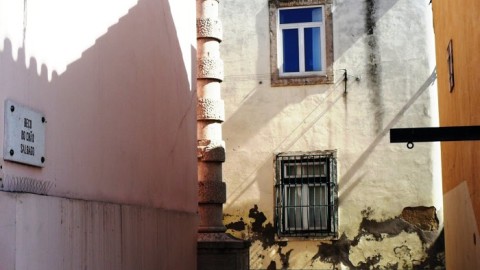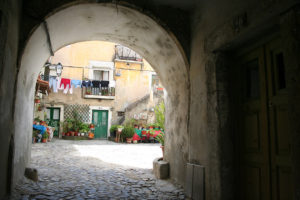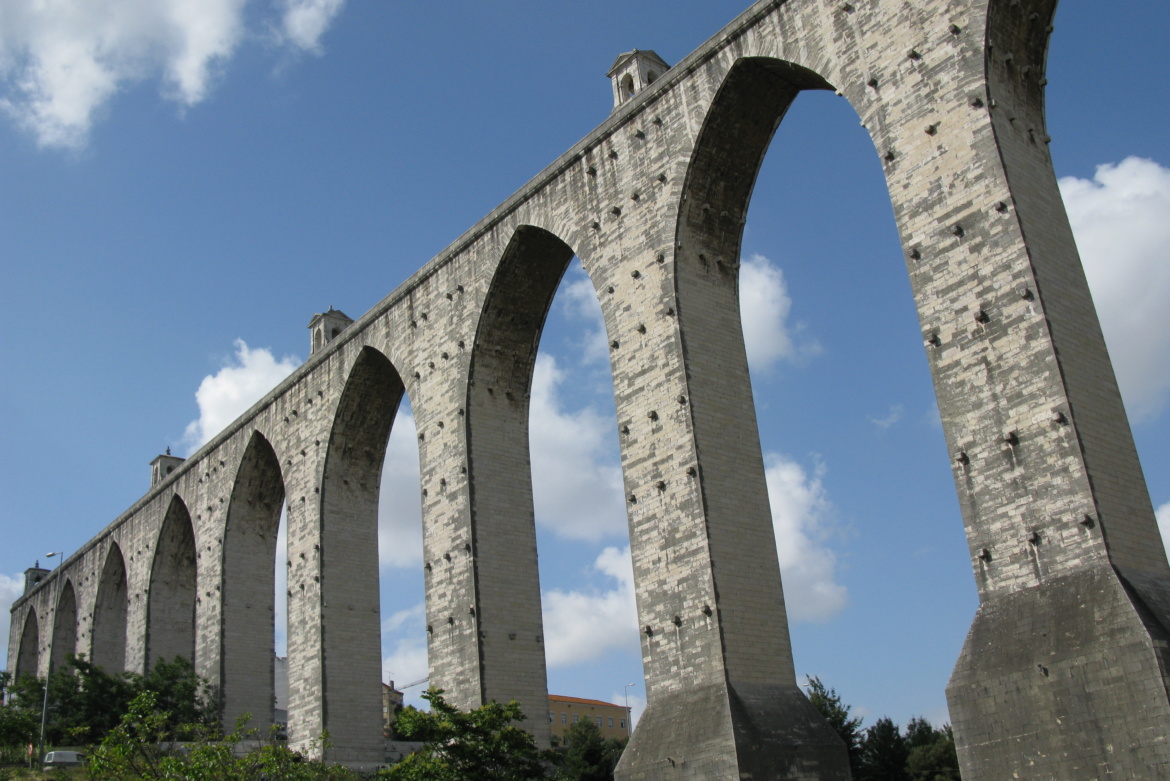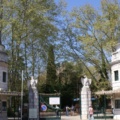In Portugal we don’t exactly have the tradition of celebrating Halloween. In fact, we celebrate the 1st of November, All Saints Day.
Besides being a national holiday, it used to be the day we paid our respects to the ones that had already left, and the day that children went around their neighbourhood houses asking for “Pão-por-Deus” (something like “Bread for God’s sake”) and, in return, got bread, cookies and nuts. It was also on this day that bread used to be divided amongst the poorest.
Nonetheless, some old traditions started disappearing, especially in big cities, and over the past few years Halloween started to increase its Portuguese fan base.
It is common nowadays to see some people celebrating it, by dressing up in scary costumes and going out to party, and to get you in the mood we decided to introduce you some of the spookiest places in Lisbon.
Beco do Chão Salgado – The alley of the salted ground
This now a tiny alley in Belém was the site of one of the bloodiest chapters of the History of the city.
In 1759 the Távora family was accused of treason and sentenced to death. All the family members were cruelly tortured in Belém and then decapitated, while king D. José watched the whole scene.

The bodies were burnt on that same place and the ground was covered with salt so that nothing could grow there.
The king also ordered to put there an obelisk with 5 rings, one for each person slaughtered that day, with an inscription stating that no building should be built on that place.
For many years the king’s orders were followed but after a while buildings started to be constructed. The engraved obelisk still stands there, however, keeping the memory of that tragic event alive.
Pátio do Carrasco – The Executioner’s Patio
Pátio do Carrasco is located between Lisbon’s Sé and Santa Luzia Belvedere and it was named after its most famous resident, Luis António Alves, also known as Lisbon’s last executioner.

The patio was supposedly connected to a nearby prison where Luis Alves used to work, Limoeiro prison, and some people say that, sometimes, screams are still heard on an existing tunnel. Some even say that it is the spirit of the executioner, regretting all the deaths he committed during his lifetime.
Pátio do Carrasco is still inhabited and it has a locked gate that prevents people from sneaking in but if you happen to pass by, in the still of the night, and you listen to some suspicious noises keep on walking. Just in case…
Aqueduto das Águas Livres – Águas Livres Aqueduct
In the late 19th century a string of murders terrified the city of Lisbon. In the beginning the authorities thought it was a series of suicides, all taking place at Aqueduto das Águas Livres, in Sete Rios area, but quickly they found out that those people did not commit suicide, they were murdered instead.
 A Spanish man, called Diogo Alves, managed to hide inside Aqueduto das Águas Livres and when someone was passing by he mugged them and then threw them over the ledge of the 65 meters high aqueduct.
A Spanish man, called Diogo Alves, managed to hide inside Aqueduto das Águas Livres and when someone was passing by he mugged them and then threw them over the ledge of the 65 meters high aqueduct.
It’s not easy to find official numbers but some sources state that Diogo Alves murdered almost 80 persons, in the summer of 1837 alone, becoming one of the first serial killers in Portugal.
Diogo Alves was eventually caught, after robing a house and killing the entire family, and was sentenced to death by hanging.
If this case was not creepy enough, there is a silver lining: his head was kept for scientific studies and it still remains in Faculdade de Medicina da Universidade de Lisboa (Lisbon’s Medical School), preserved in formaldehyde.
The aqueduct can be visited by appointment.
Palácio Beau Séjour – Beau Séjour Palace
To finish on a lighter note, we will introduce you to Palácio Beau Séjour.
Palácio Beau Séjour is a beautiful 19th manor house, located in Benfica, that was built in 1849 by the Viscountess of Regaleira and later bought by the Baron of Glória.
It has some unique Portuguese tiles, made by the most prestigious producer of Portuguese tiles, Fábrica Viúva Lamego, and it is surrounded by a delightful French formal garden.

The building was restored between 1989 and 1992, by the municipal council of Lisbon, and since 1992 houses the municipal agency dedicated to the study of Lisbon’s heritage, the Olisiponenses Studies Bureau.
Besides becoming well know for its architectural value and its style, Palácio Beau Séjour became famous also because several inexplicable events allegedly occur there.
Some municipal workers, even the most sceptic ones, swear that from time to time books are misplaced, boxes are moved to different places of the room during the night, when the building is closed, voices and echoes are heard and in the garden a bell chimes where there’s no bell whatsoever.
According to some people, including those working there, the one responsible for all of these events is no other than the Baron of Glória that, perhaps not being able to leave his home, still haunts the place, playing small pranks to those visiting the building.
> Beco do Chão Salgado – The alley of the salted ground
> Pátio do Carrasco – The Executioner’s Patio
> Aqueduto das Águas Livres – Águas Livres Aqueduct
> Palácio Beau Séjour – The Olisiponenses Studies Bureau





